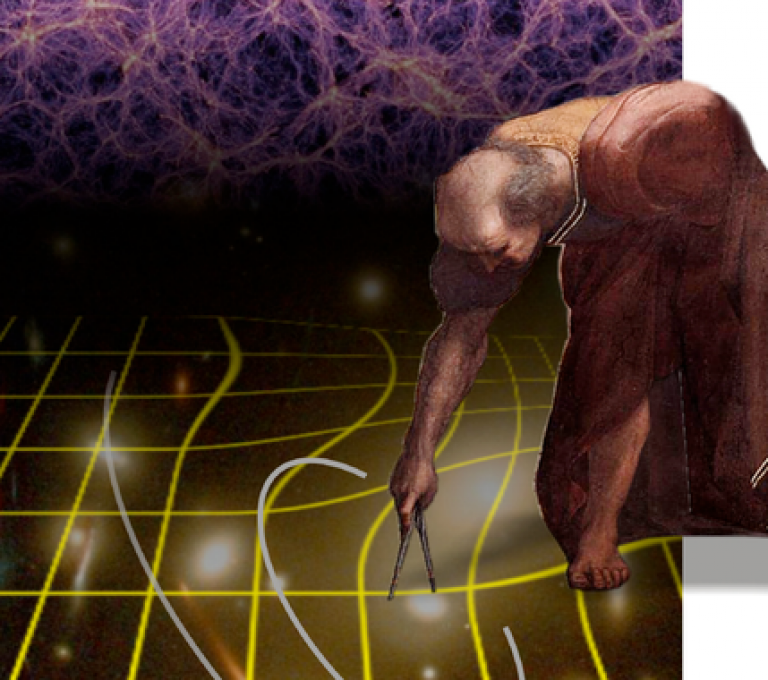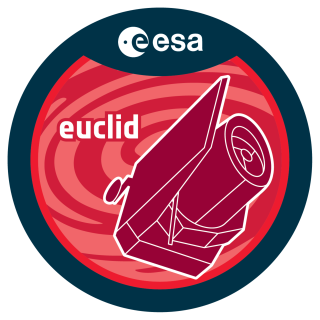Euclid is an ESA space mission that will survey a large fraction of the sky and take deep, high-resolution images and measure multi-wavelength information of more than a billion galaxies.
Euclid is an ESA space mission to explore the Dark Universe. Launched in July 2023, Euclid will survey a large fraction of the sky and take deep, high-resolution images and measure multi-wavelength information of more than a billion galaxies. By studying subtle patterns in the distribution and properties of these galaxies, Euclid will uncover new insights into the nature of dark matter and dark energy, the little-understood main ingredients of our model of the Universe.

Image taken from the front page of the ESA Euclid Yellow Book. Composite of a fragment from Raphael's fresco The School of Athens in the Stanza della Segnatura of the Vatican Palace depicting Euclid; a simulation of the cosmic web by Springel et al.; and an image of Abell 1689. The composition was put together by Remy van Haarlem (ESA/ESTEC).
UCL has been heavily involved in Euclid from its inception in the 2000s. One of its two instrument, the VIS camera, was built at UCL’s Mullard Space Science Laboratory. Researchers in the Department of Physics and Astronomy have responsibility for some of Euclid’s complex data processing and quality control, and are active in the science analysis. Euclid activities in the Department are coordinated by Prof. Benjamin Joachimi
Are you interested in working with Euclid data?
We offer PhD projects on Euclid. For details, see PhD Projects | UCL Astrophysics Group - UCL – University College London.
Useful links
 Close
Close


